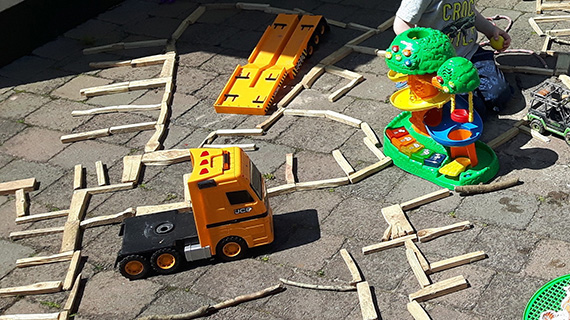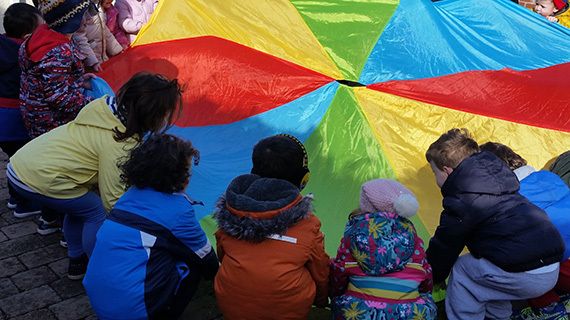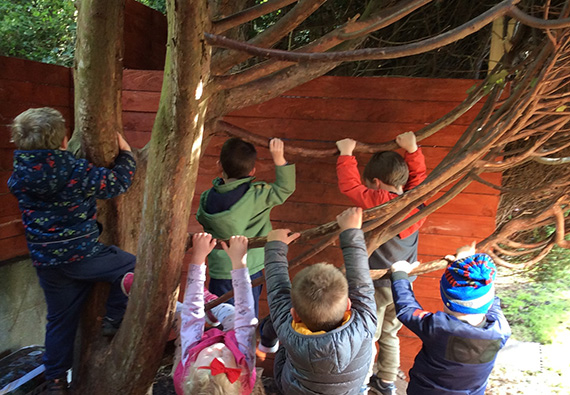Play in Early Childhood Education
Children need companionships, time, space and materials to play.
In pre-school we provide these:
We plan the play space so that children can choose where and what they want to play allowing them choice and independence.
They have easy access to props and materials that they can use to develop their ideas, experiment, design, build, create stories and stretch their imaginations and skills.
Adults are there as an additional resource. We offer help and guidance when required and use the many opportunities that a playful environment offers to promote learning. When you walk in our pre-school setting you will see the children play with sand, water, bricks, paint, puzzles, books etc.
They will be talking, laughing, reading, writing, building, dancing, singing and most of all they will be pretending – pretending to be a mother or father or child, pretending to be a builder, an engineer, a shopkeeper, or a hairdresser etc. They will be learning from one another and showing us all how competent they are and what they have learned about the world around them.
For this reason, Vygotsky (1933) tells us that in play the child is a head taller than him/herself.

Why Play?
Play is considered so important to a child’s development that the UN Convention on the Rights of the Child (1989) has established it as every child’s right. It is the child’s way of making sense of the world – a learning tool that engages, motivates, challenges and pleases.
Children are born with an innate drive to learn – they want to be seen as smart, intelligent and capable people who can do things, who know things and who are well connected with family and friends. Play gives them an opportunity to demonstrate all that they have observed and learned about the real world and at the same time the opportunity to experiment with how they can make that learning useful in their own world.

Evidence from Research
The most recent neuroscience or brain research confirms the power of play for brain development. The brain grows fastest in the first 5 years of life and the wiring of the brain makes multiple and complicated neuron connections that in many ways decide our future ability to learn, achieve and be happy. Play helps the brain to make these connections because it allows free reign to the imagination and consequently children can engage in new experiences, activities, roles and relationships on an on-going basis. Play is not about completing one task at a time but about dealing with multiple tasks such as relationships, activities, problem solving, other peoples’ ideas and creating companionship and enjoyment, all at the same time. In this way, play strengthens and supports the connections between the neurons of the brain and provides a rich opportunity for children to grow and develop.

Síolta - The National Quality Framework for Early Childhood Education
Síolta (Irish word for seed) identifies with the Principles of Quality as representing the vision which underpins and provides the foundation for quality practices in Early Childhood Care and Education (ECCE) in Ireland. The general terms and conditions governing participation in the free Pre-school scheme requires ECCE services to provide an appropriate educational programme for children in their pre-school year, which adheres to the principles of Síolta, the National Framework for Early Childhood Education.
Aistear- The Early Childhood Curriculum Framework Aistear
Aistear (Irish word for journey) is the curriculum framework for all children from birth to six years across all early childhood settings, the child’s own home, and junior and senior classes in primary schools. It provides information, ideas and suggestions to help support children’s learning and development.

Play in Aistear and Síolta, the national curriculum and quality frameworks
The research is so clear about the benefits of play that we in Ireland have established play as central to the early childhood curriculum.
Reference Material
Aistear Toolkit
Siolta Webiste
Playcore Website - The Value of Play
Engaging Families in the Early Childhood Development Story
Understanding the Brain - The Birth of a learning science
